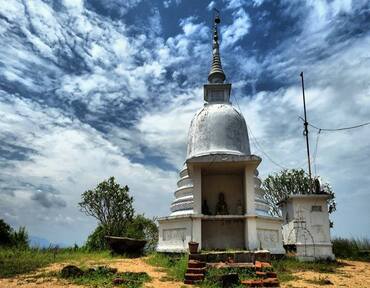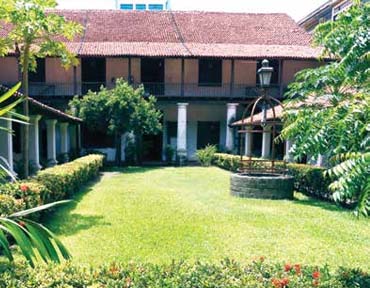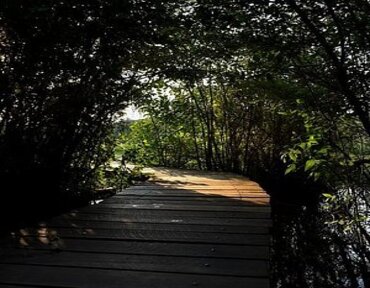


Ancient remains of great civilizations always shrouded with greatest stories. Sri Lankan monuments are no different from the norms of such remains, always attributing to the folklore of the community. One of such monument that has a great historical value and is shrouded by the folklore is Rankoth Viharaya in Panadura. According to the legend of the temple, it was erected upon the soils of the land that proven anyone can triumph over the adversaries, - a tale of a cobra being attracted by an army of frogs on the land and later the landlord decided to changed into a temple land. The inception and construction of the temple has no great centuries due to its inception on past two centuries. First half of the centuries passed the temple was called Galwala or Galkanda Viharaya, but with a addition to the temple – the gold pinnacle, the temple was named after Golden-Pinnacle Temple or also known as the Rankoth Viharaya. Another folklore surrounded and proven true, about the Viharaya is the great debate known as Panadurawadaya was held in this temple. The great debate is over the teachings of Christianity and Buddhism with a overwhelmed victory favors to Buddhism, thus becoming the premier educational center for Buddhist teachings. In architecture’s point of view the image house is the prominent feature of the temple, consisting with two parts the inner shrine and the walled ambulatory area. The walls and the ceiling of the ambulatory area are filled with paintings of Jathaka Katha, the depiction of hell, the life story of Lord Buddha, amongst them the 'Maara Parajaya' – the defeat or taming of the devil, the Lord Buddha cremation ceremony, the distribution of the relics are the best and most infamous.

The two-storey colonnaded building on Prince Street, Pettah (Colombo 11) which houses this museum was constructed during the Dutch occupation of Colombo (1656 - 1796) and was the formal residence of the Governor of Dutch Ceylon Thomas van Rhee (1634 - 1701) during his term of office from 1692 to 1697. The building has been used for many different purposes over the years. It was a teacher-training college and an institute for the instruction of clergymen between 1696 and 1796. It was also used as a hospital. It became a barracks in the second half of the 1800s and 1900 it was used as a police training school, set up by the British. In 1932 it was converted to the Pettah Post Office. In 1971 following heavy monsoon rains one of the exterior walls collapsed and the building was abandoned. Following protests by the Royal Asiatic Society and the Dutch Burgher Union against plans to demolish the building, in 1973 a committee was established with representatives from the Ceylon Tourist Board, the Department of Archaeology, the Netherlands Alumni Association of Lanka and the National Archives, to restore the building and establish a museum covering the Dutch colonial period
.jpg)
description not found

In the most urbanized district of Sri Lanka, in the heart of the city preserved with the natural environment and its potent gifts, the Kotte Rampart is truly a national treasure that exhibits the commitment of the citizens and interested and responsible parties in preserving the natural endowments for the future generations. As a wetland in the middle of Sri Jayawardhanapura Kotte the Administrative Capital, the Kotte Rampart Wetland Park has lush vegetation with commendablelly preserved biodiversity, spreading across more than 18 hectares from the 1000 hectares forest sanctuary as declared by the Wildlife Conservation in 1984.